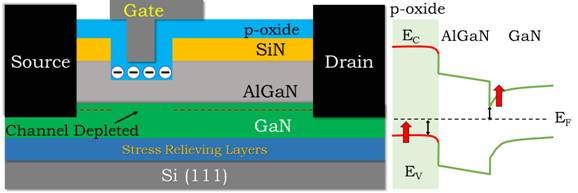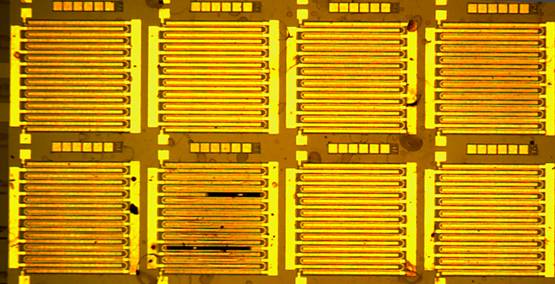Ministry of Science & Technology
New technology for High Electron Mobility Transistor will make India self-reliant in power transistor technology
प्रविष्टि तिथि:
18 MAR 2021 10:05AM by PIB Delhi
Scientists from Bangalore have developed a highly reliable, High Electron Mobility Transistor (HEMTs) that is a normally OFF device and can switch currents up to 4A and operates at 600V. This first-ever indigenous HEMT device made from gallium nitride (GaN) is useful in electric cars, locomotives, power transmission and other areas requiring high voltage and high-frequency switching would reduce the cost of importing such stable and efficient transistors required in power electronics.
Power electronic systems demand high blocking voltage in OFF-state and high current in ON-state for efficient switching performance. Specific transistors called HEMTs made of aluminium gallium nitride/ gallium nitride (AlGaN/GaN) provides an edge over silicon-based transistors as they allow the systems to operate at very high voltages, switch ON and OFF faster, and occupy less space. Commercially available AlGaN/GaN HEMTs use techniques to keep the transistor in normally OFF state, which affects the stability, performance and reliability of the device.
Therefore, to meet this need, Prof. Mayank Shrivastava, Dept. of Electronic Systems Engineering, his co-investigators Prof. G. Narayanan, Prof. Digbijoy Nath, Prof. Srinivasan Raghavan and Prof. Navakanta Bhat, from Department of Electrical Engineering, and Centre for Nanoscience & Engineering, and their students, all from Indian Institute of Science Bangalore (IISc), have developed the new kind of HEMT, which is in the OFF state by default and works like any other commonly used power transistor. Such transistors are called e-mode or enhancement mode transistors. Supported by the Department of Science & Technology (DST), Government of India, under the ‘Make in India’ initiative, they developed the new technology and device architecture using an Aluminium titanium oxide gate.
The developed technology is a first of its kind, which uses a type of chemical called ternary oxide (composed of two different metal ions combined in an oxide matrix or Al, Ti and O), which behaves like material having larger positive charge concentration (p-type material). It does away with intrinsic reliability and performance issues of the in-use industrial techniques for e-mode HEMTs, allowing the development of efficient power switching systems.
This device will now be taken up for the prototype development and field-testing level (TRL 5). The scientists used aluminium titanium oxide as the gate oxide, where the percentage of aluminium could be controlled during the fabrication process. Since aluminium titanium oxide is stable, it resulted in high reliability of the transistor.
The projected overall power device market is set to cross the 18 Billion $ mark by 2020, out of which the market for HEMTs is projected to cross the 5 Billion US$ market. So, GaN HEMTs will acquire a major share of the power device market. With a growing market for electric vehicles in India, such an indigenous development can make India self-reliant for transistor technology.

Fig. 1. Device structure depicting proposed novel aluminium titanium oxide, which acts as p-type gate oxide to achieve normally-OFF operation in GaN HEMTs and the energy band diagram depicting the proposed concept [1].

Fig. 2. Optical image of the fabricated e-mode HEMTs with meandering gate structure
[1] Sayak Dutta Gupta, Ankit Soni, Rudrarup Sengupta, Heena Khand, Bhawani Shankar, Nagboopathy Mohan, Srinivasan Raghavan, Navakanta Bhat, and Mayank Shrivastava, “Positive Threshold Voltage Shift in AlGaN/GaN HEMTs & E-mode Operation by AlxTi1-xO based Gate Stack Engineering”, IEEE Transactions on Electron Devices, Volume: 66, Issue: 6, June 2019, Page(s): 2544 – 2550. DOI:10.1109/TED.2019.2908960
[For more details, Prof. Mayank Shrivastava, IISc Bangalore (mayank[at]iisc[dot]ac[dot]in, +919591140309) can be contacted.]
******
SS/KGS/(DST Media Cell)
(रिलीज़ आईडी: 1705691)
आगंतुक पटल : 2348